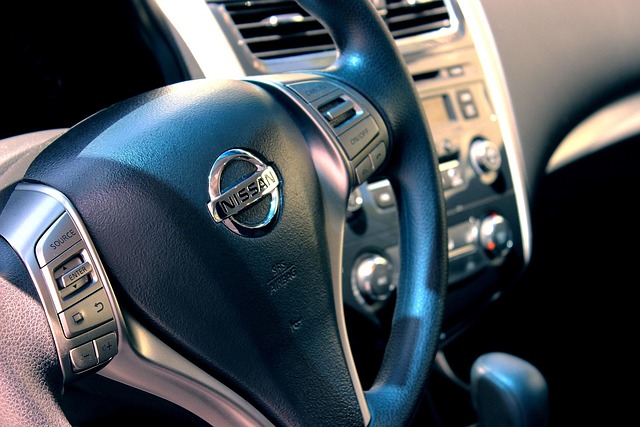Looking to register your car in California? Navigating the process can seem daunting, but we’ve broken it down step-by-step. First, understand key requirements like vehicle eligibility and necessary documents. Gather important papers, including proof of ownership and insurance. Utilize a VIN verifier to check your vehicle’s history for any potential issues or previous accidents. Then, visit the DMV in person or complete the online registration process. Pay the required fees, receive your license plate, and hit the road legally!
- Understand California Car Registration Requirements
- Gather Necessary Documents for Car Registration
- Use VIN Verifier to Check Vehicle History
- Visit DMV or Complete Online Registration Process
- Pay Car Registration Fees and Receive Your Plate
Understand California Car Registration Requirements

Before registering your car in California, it’s crucial to understand the state’s specific requirements. One key aspect is ensuring your vehicle has passed a recent safety inspection. This involves verifying the Vehicle Identification Number (VIN) and checking for any outstanding issues related to safety or emissions. In California, this process often requires a mobile VIN verification, where a professional will come to you to inspect and confirm your car’s compliance with state standards.
Additionally, you’ll need to have all necessary documentation in hand, including proof of ownership, insurance, and identification. The California Department of Motor Vehicles (DMV) provides detailed guidelines for the registration process, which can be navigated online or at a local DMV office. Remember that accurate and timely completion of these requirements is essential to avoid any delays or penalties when registering your vehicle.
Gather Necessary Documents for Car Registration

Before you begin the registration process, ensure you have all the required documents ready. The California Department of Motor Vehicles (DMV) will need several key pieces of information and paperwork to complete your car’s registration. One crucial document is the Vehicle Identification Number (VIN) verifier, which can be obtained through a mobile VIN verifier or by performing a VIN inspection. This unique 17-character code identifies your vehicle and is essential for verification purposes.
Additionally, you’ll need proof of ownership, typically a title or a bill of sale, along with valid identification documents such as a driver’s license or state ID card. It’s also recommended to bring any applicable registration fees and ensure your insurance is up-to-date, as the DMV may request proof of insurance during the registration process. Having all these necessary documents readily available will streamline the car registration procedure in California.
Use VIN Verifier to Check Vehicle History

Before you begin the registration process, it’s crucial to use a VIN verifier like a mobile vin checker or mobile vin inspector to ensure you’re making an informed purchase. The Vehicle Identification Number (VIN) is a unique code that identifies your car’s make, model, and year, among other details. By inputting this 17-character code into a reliable mobile vin verification tool, you can access a comprehensive vehicle history report that includes accident records, odometer readings, and previous ownership information.
This step is essential as it helps you avoid potential issues like hidden damage or mileage fraud. With the vast number of vehicles on the road, having an accurate VIN history check ensures you’re getting a reliable and safe car. Plus, many mobile vin inspection apps provide real-time data, making it convenient to verify a vehicle’s background before finalizing the deal.
Visit DMV or Complete Online Registration Process

You have two options for registering your car in California: visit a DMV office or complete the registration process online. The Department of Motor Vehicles (DMV) offers both services, making it convenient to register your vehicle no matter your preference. If you choose to go in-person, prepare all necessary documents and forms, including proof of ownership, before visiting a local DMV office. During your visit, a DMV representative will guide you through the registration process, which includes verifying your Vehicle Identification Number (VIN) using official tools, like a mobile VIN verifier or an in-house scanner to ensure the vehicle’s history is clean and it complies with California regulations.
Alternatively, California allows you to register your car online, offering a more time-efficient option for those who prefer digital services. The DMV provides step-by-step instructions on their website, making it easy to follow along. Similar to in-person registration, verifying the VIN is still crucial. You can use an approved mobile VIN inspection service or enter your VIN into the DMV’s online system to check its history before completing the registration process. Ensure you meet all requirements and have all necessary documents ready for a smooth online registration experience.
Pay Car Registration Fees and Receive Your Plate

After confirming your vehicle’s eligibility for registration, it’s time to pay the required fees. California offers several payment methods, typically including credit card, debit card, or check. The cost will depend on various factors like the type of vehicle and its age. Once you’ve successfully paid, the DMV will issue your car plates. These plates are a crucial part of your vehicle’s identification, often displaying unique combinations of letters and numbers.
To ensure a smooth process, consider utilizing a mobile vin inspection or mobile vin verification service. These services provide convenient alternatives to traditional DMV visits by allowing you to verify your Vehicle Identification Number (VIN) and register your car from the comfort of your home or office. A reliable mobile vin verifier can help you avoid long lines and navigate the registration process efficiently.
Registering a car in California is a straightforward process that involves understanding the state’s requirements, gathering essential documents, and completing the registration process either at the DMV or online. Utilizing a VIN verifier can help you check the vehicle’s history, ensuring a smooth and secure transaction. Once your application is approved, you’ll pay the necessary fees and receive your unique California license plate, marking the successful completion of your car registration.
